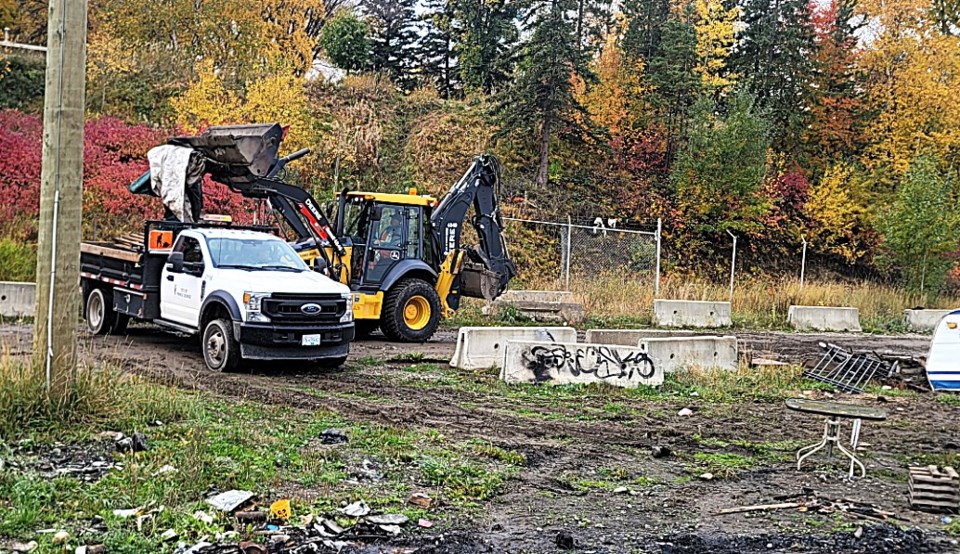Calls for service and complaints in the Millar Addition area were “modest” over the summer months, a new report to council indicates.
City staff developed the report in response to council’s Oct. 7 request for more information about safety issues of concern to residents of the Millar Addition and other neighbourhoods around Moccasin Flats.
The report, titled “Social Health – Issues Update,” highlights that calls for service and complaints from the Millar-Addition area remained modest over the summer months, attributed to proactive engagement efforts at the Lower Patricia Boulevard Encampment, also known as Moccasin Flats. Staff noted a significant reduction in hazardous materials and a decrease in the encampment’s occupants.
The city is currently implementing a four-phase response plan to address the challenges posed by the encampment. As of now, the city is in Phase 1, which focuses on building capacity and mitigating hazards.
Plans are underway to transition to Phase 2, which will demonstrate to the Supreme Court the City’s capacity to facilitate alternative shelter solutions for those living at the encampment. Further communication with the public will occur once the court application is advanced and additional details are confirmed.
Housing and shelter update
As of Oct. 11, all available spaces at Victoria Street Supportive Housing are fully occupied, reflecting ongoing demand for supportive housing in the area.
The report notes a significant decrease in the number of individuals sheltering at the Lower Patricia Boulevard Encampment, which has dropped from 44 in May to just 14 currently.
The city is operating 151 shelter beds, with six reserved to assist LPBE occupants. Plans are on track for the opening of the 3rd Avenue Transitional Facility later this fall, which will provide 24/7 staffing and various support services, including health care referrals and life skills training.
Encampment management strategy
The LPBE remains the city’s only large entrenched encampment. As the city progresses through Phase One of its response strategy, it has seen positive developments, including a reduction in encampment residents and improved site conditions. The city is preparing to return to the BC Supreme Court to discuss the future status of the encampment, which remains a key focus. The transition strategy includes several phases aimed at creating suitable housing alternatives and managing health and safety concerns. Phase Two, anticipated to begin in late 2024, will involve demonstrating community capacity to transition the encampment to other housing forms.
Fire and Rescue response
From Jan. 1 to Oct. 20, Prince George Fire Rescue responded to a range of incidents, including 292 burning complaints and 398 medical aid calls within the downtown core. The service remains vigilant in ensuring public safety across the city, the report states.
Bylaw enforcement efforts
Bylaw officers continue to collaborate with civic operations to mitigate risks at the encampment, engaging in regular cleanup efforts to remove abandoned materials and improve safety. In 2024, there have been 164 calls regarding open drug use in the downtown area, reflecting ongoing challenges in public safety.
Community policing
The Prince George Community Policing unit has actively maintained partnerships with local Block Watch groups, currently supporting 44 active neighbourhood watch areas. Reports indicate that break and enter incidents have been relatively stable, with a total of 373 recorded in 2024 thus far.
Further updates on these initiatives are expected as the city moves forward with its plans for sustainable housing and social services.
Council received the report for information at its meeting Monday.

.png;w=120;h=80;mode=crop)

